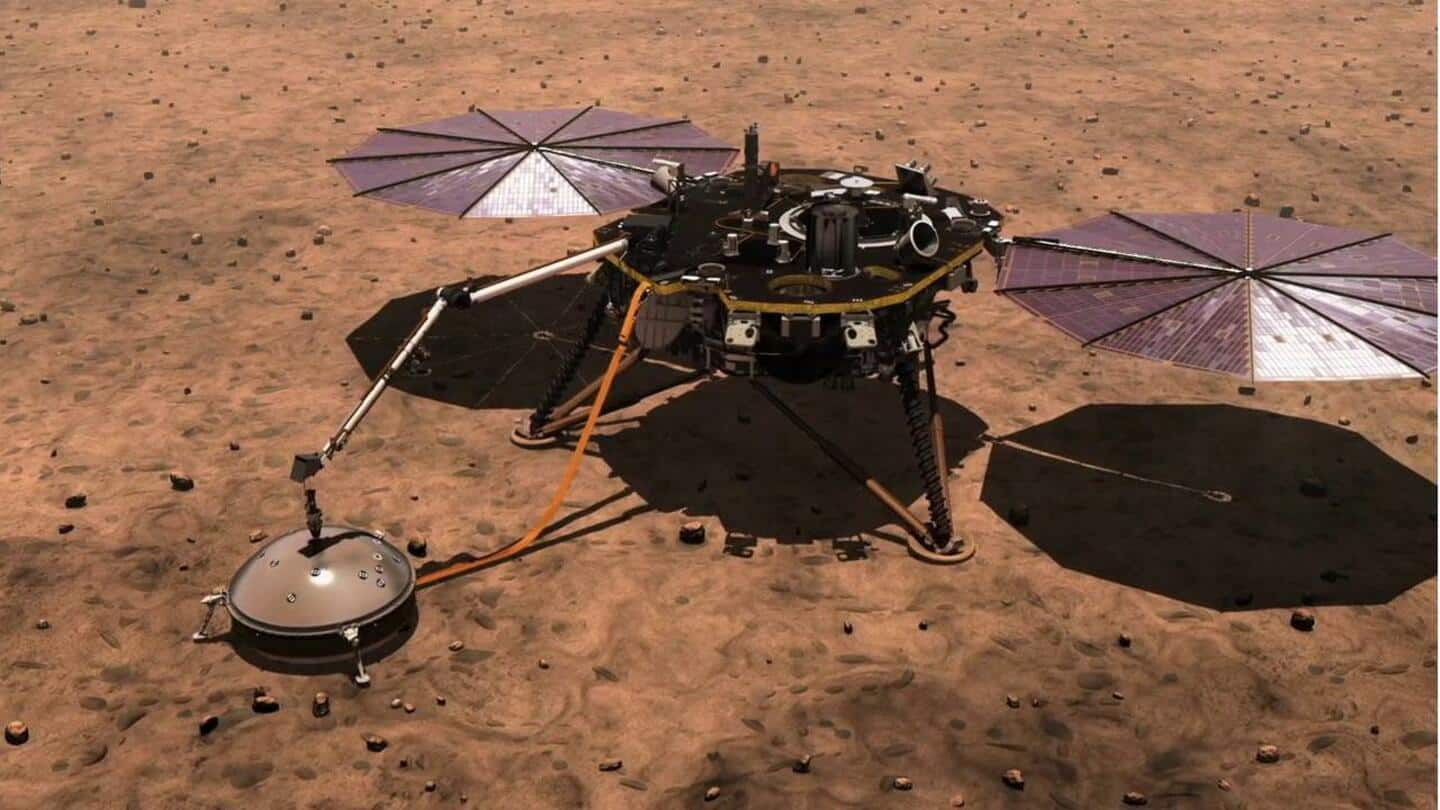
NASA Mars InSight Lander mission officially terminated after 4 years
What's the story
NASA's InSight Lander mission has come to an end, after nearly four years on Mars.
The official declaration was made on Wednesday after the mission controllers at Jet Propulsion Laboratory (JPL) were unable to communicate with the Lander after two consecutive attempts, which led the team to conclude that the Martian spacecraft had run out of energy, a state called "dead bus."
Context
Why does this story matter?
The InSight (short for Interior Exploration using Seismic Investigations, Geodesy, and Heat Transport) Lander, which touched down on the red planet in November 2018, has fallen silent forever.
For months now, the $814 million solar-powered spacecraft was expected to reach its end because of the Martian dust that had piled on its solar panels, which subsequently dampened its power generation capacity.
Termination
The last time the Lander contacted was on December 15
NASA had originally planned to terminate the mission when InSight Lander missed two consecutive communication attempts to Earth.
Just to be sure the agency will continue to listen for any signal from the Lander, but hearing from the Lander at this point is considered unlikely.
The last time that the team heard from the Lander was on December 15.
Information
The seismometer remained powered on despite the accumulating dust
The mission has provided several key inputs, including information about Mars' interior layers (crust, mantle, core), weather conditions, and marsquakes. The seismometer was the last science instrument that remained powered on as dust accumulated on the lander's solar panels, which reduced its energy.
Twitter Post
NASA bids farewell to InSight
Rest easy, little lander ❤ @NASAInSight's mission has ended after more than four years of detecting marsquakes, meteoroid impacts, and unique science on Mars. Congratulations - and thank you - to the team that made these pioneering discoveries possible. https://t.co/MCRzWYFSMd pic.twitter.com/GJkVI88CWi
— NASA JPL (@NASAJPL) December 21, 2022
Official words
InSight's legacy will "live on"
"InSight has more than lived up to its name," said Laurie Leshin, JPL's director.
"As a scientist who's spent a career studying Mars, it's been a thrill to see what the lander has achieved, thanks to an entire team of people" who helped make this mission a success.
"Yes, it's sad to say goodbye, but InSight's legacy will live on, informing and inspiring."
Challenge
The clumpy Martian soil posed a challenge to the study
Onboard was another instrument called the Heat Flow and Physical Properties Package, nicknamed "mole."
The 16-inch-long mole, embedded with temperature sensors, was designed to probe into Mars' surface, to measure heat within the planet's interior. But the clumpy soil around InSight made it a challenging task.
In the process, valuable data on the physical and thermal properties of the Martian soil was obtained.
Accomplishments
InSight has detected over 1,300 marsquakes
InSight's in-house seismometer has detected 1,319 marsquakes, including those resulting from meteorite impacts.
In February, the team at NASA discovered a nearly 500-feet wide crater that resulted from a meteorite impact, the largest one recorded on Mars, and it exposed boulder-size chunks of ice present beneath the Martian surface.
Seismic data helps scientists understand the planet's crust, mantle, and core layers.